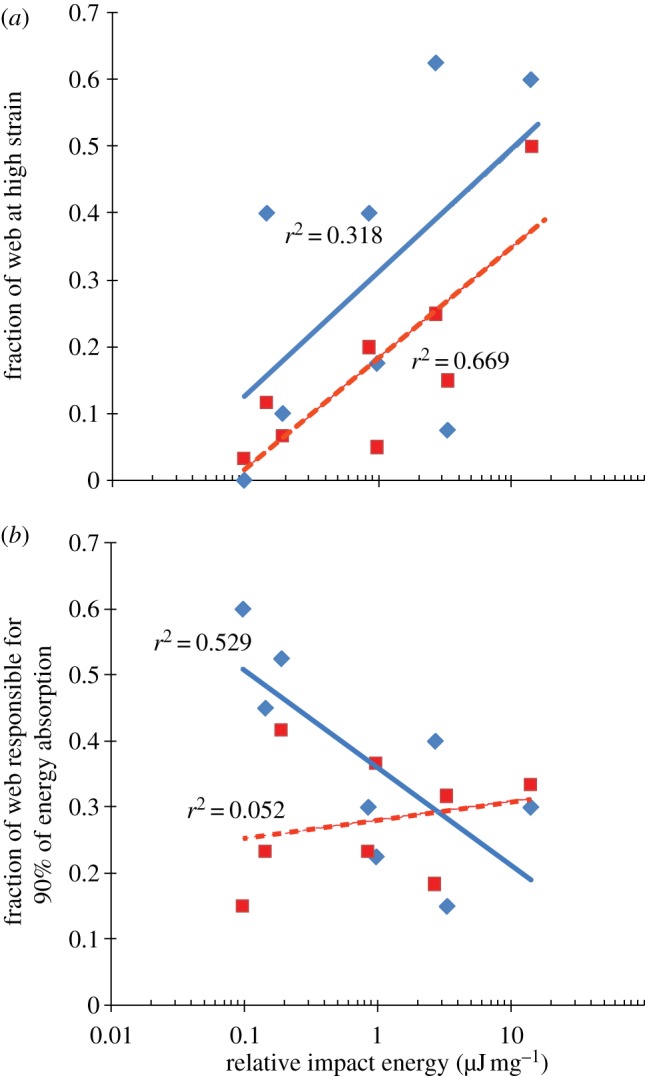Figure 7.

Two measures of web surface area recruitment. The x-axis can be interpreted as the relative difficulty of prey capture. (a) Proportion of silk reaching high strain during prey impact. High strain was defined as 5% for radial silk and 20% for capture spiral because this approximated the minimal strain at which significant energy damping occurs. The total fraction of silk pulled to high strain under prey impact was independent of relative impact energy for radial threads (y = 0.31 + 0.18x, n = 8, r = 0.56, p = 0.14) but increased for capture spiral threads (y = 0.18 +0.17x, n = 8, r = 0.82, p = 0.01). The ratios were calculated as the total number of segments of each type of silk pulled to high strain divided by the total number of segments of each type of silk. (b) Web area required to absorb prey energy. The y-axis indicates the minimal area of the web required for 90% of the total work performed by a particular type of silk and is a measure of how well the impact was distributed through the web. The fraction of web area recruited decreased with relative impact energy for radii (blue diamonds: y = 0.36 − 0.15x, n = 8, r = −0.73, p = 0.04) but not for capture spirals (red squares: y = 0.28 + 0.028x, n = 8, r = 0.23, p = 0.59). Between 20 and 40% of capture spirals and radii are recruited for difficult prey. The lower energy of easy prey is broadly distributed among the radii of a web while the increased energy of difficult impacts is concentrated in a smaller area of the web. Radii are recruited at greater distances from the impact site than are capture spirals.
